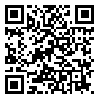BibTeX | RIS | EndNote | Medlars | ProCite | Reference Manager | RefWorks
Send citation to:
URL: http://jams.arakmu.ac.ir/article-1-2690-en.html
2- Department of Microbiology, School of Medicine, Tehran University of Medical Sciences, Enghelab Avenue, Tehran, Iran ,
Nontuberculous mycobacteria (NTM), also known as atypical mycobacteria or mycobacteria other than tuberculosis are environmental organisms that are normally found in soil and water. Many of the mycobacterial species that have been described in the past decade are involved in human diseases, especially in patients with AIDS and immunocompromised HIV-negative patients. In this study, pathogenicity and clinical significance of new species of mycobacteria were evaluated. A total of 63 new species of non-tuberculosis mycobacteria, recognized in the past ten years (2003-2013), were classified in different Runyon groups. Approximately, 40 isolates were reported to infect human. Of these, 27 (67.5%) were non-chromogenic and 13 (32.5%) were scotochromogenic. The majority of the 40 isolates belong to the slow grower group. Photochromogenic species were not pathogenic to human. The most frequent infections included respiratory infections in elderly people and cervical lymphadenitis in children caused by Mycobacterium kyorinense and Mycobacterium mantenii, respectively. NTM also causes disseminated infections, the most frequent agents of which are M. boenickei, M. houstonense, M. neworleansense, and M. brisbanense in immunocompromised HIV-negative persons. Some of the NTMs, such as Mycobacterium riyadhense, are considered the primary pathogens for human. Considering the progressive spread of HIV co-infected mycobacteria in recent years, accurate identification of these agents’ pathogenicity, drug resistance, and appropriate treatment in epidemic regions, such as Iran, is essential.
| Rights and permissions | |
 |
This work is licensed under a Creative Commons Attribution-NonCommercial 4.0 International License. |





